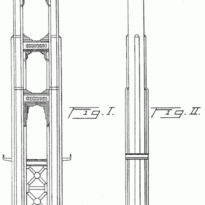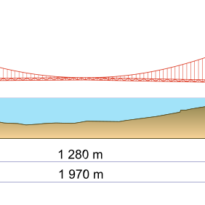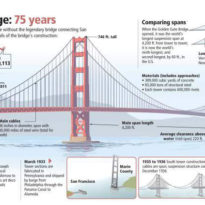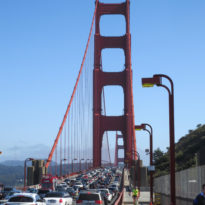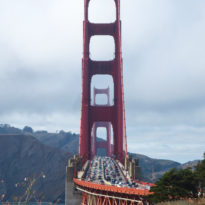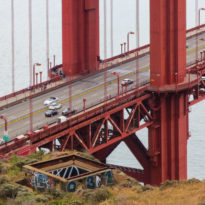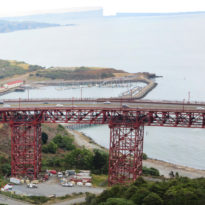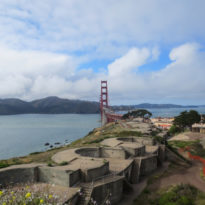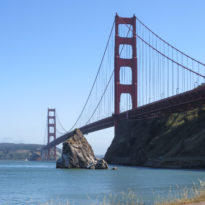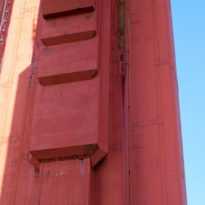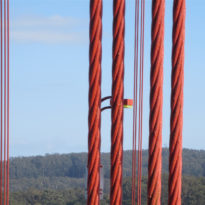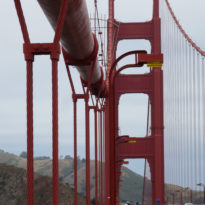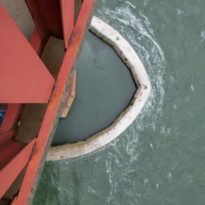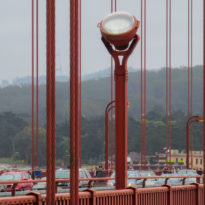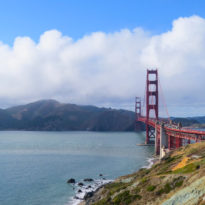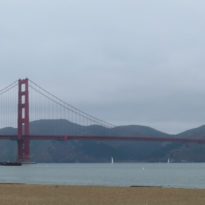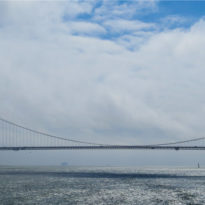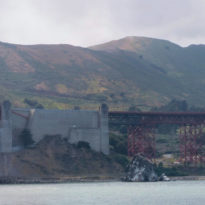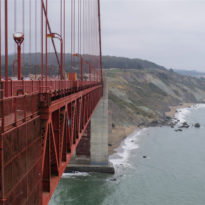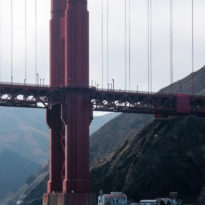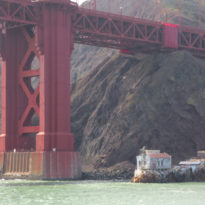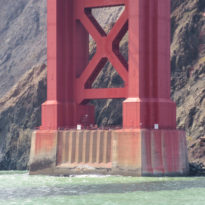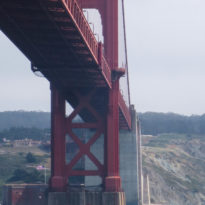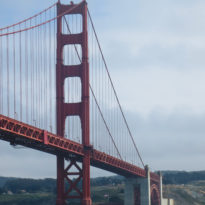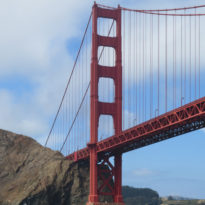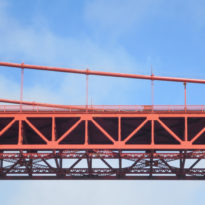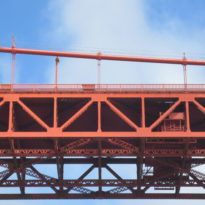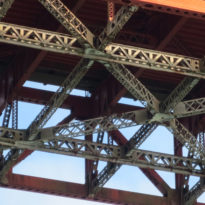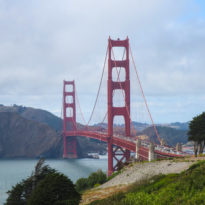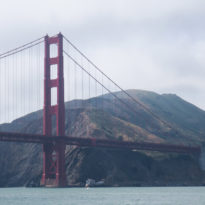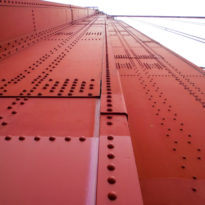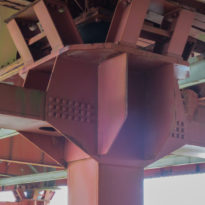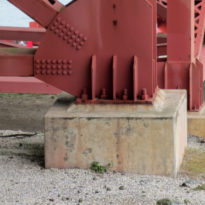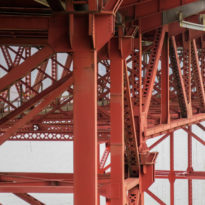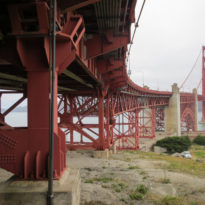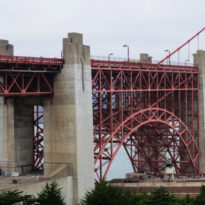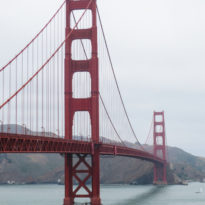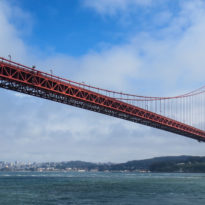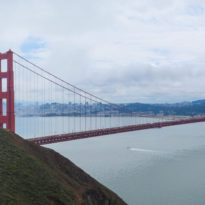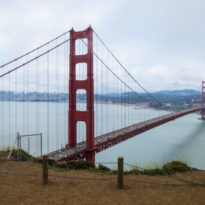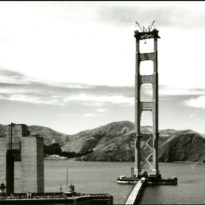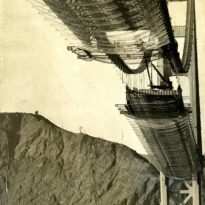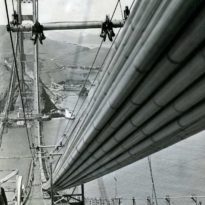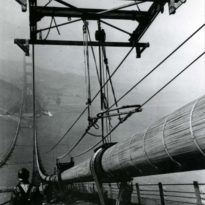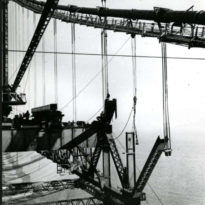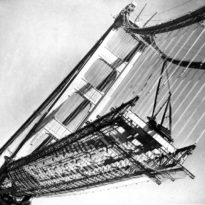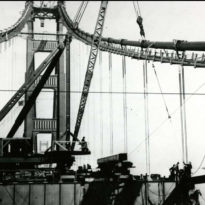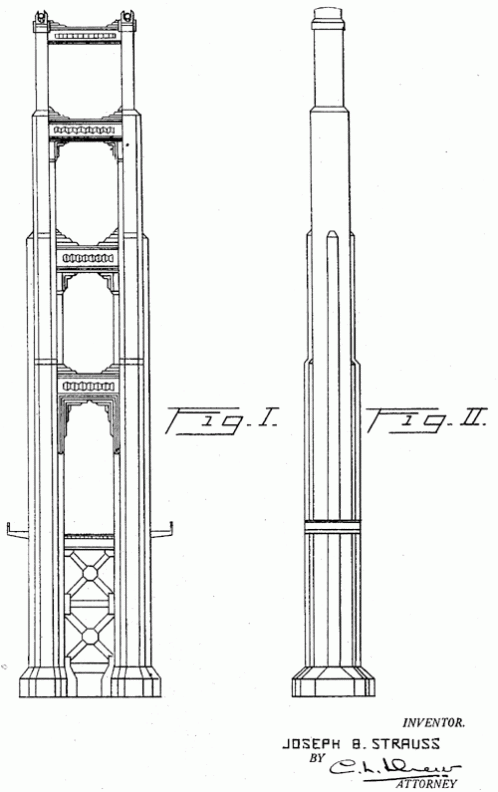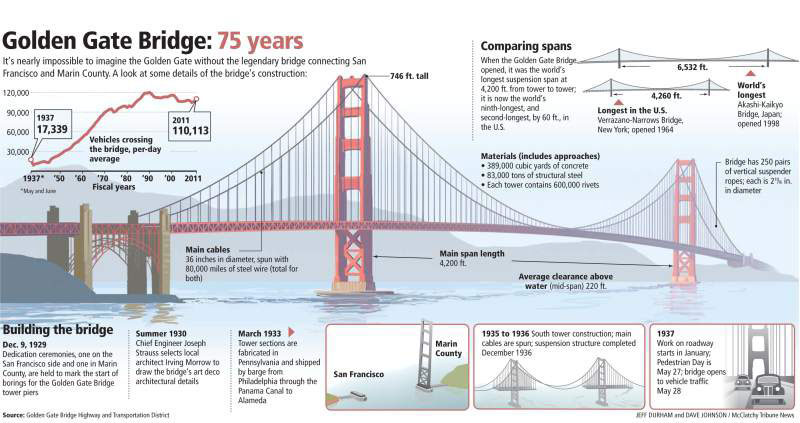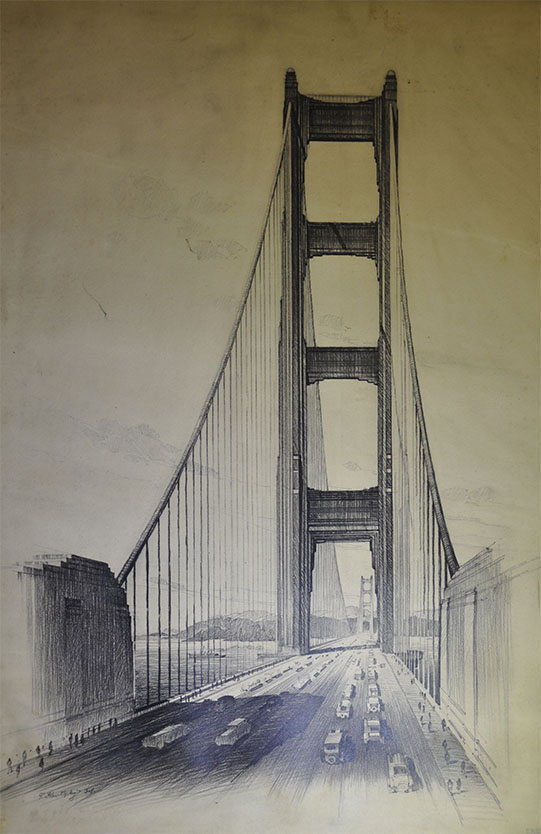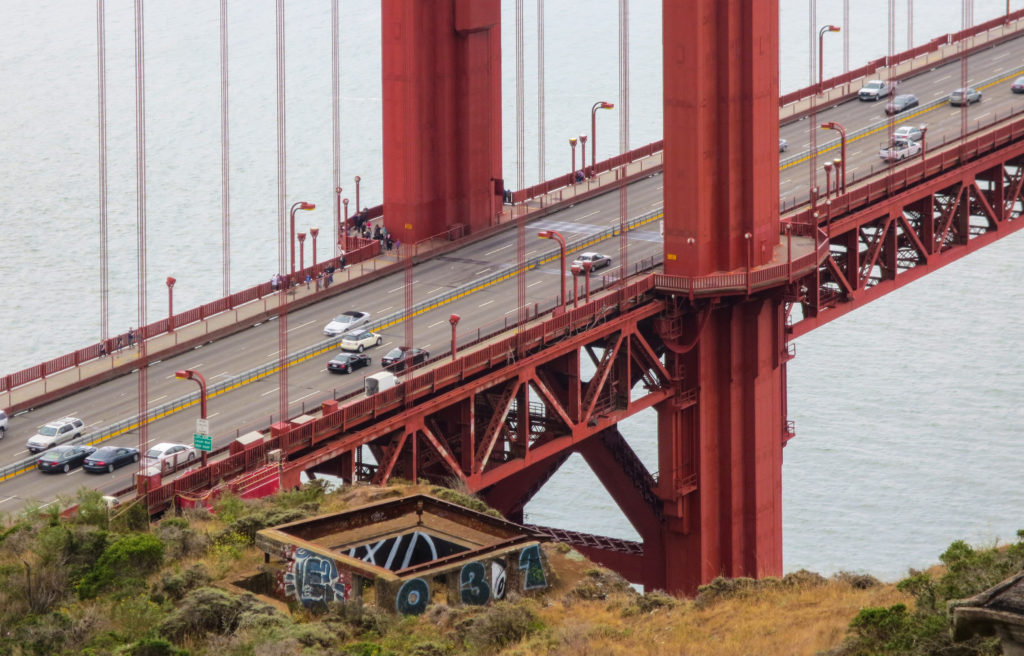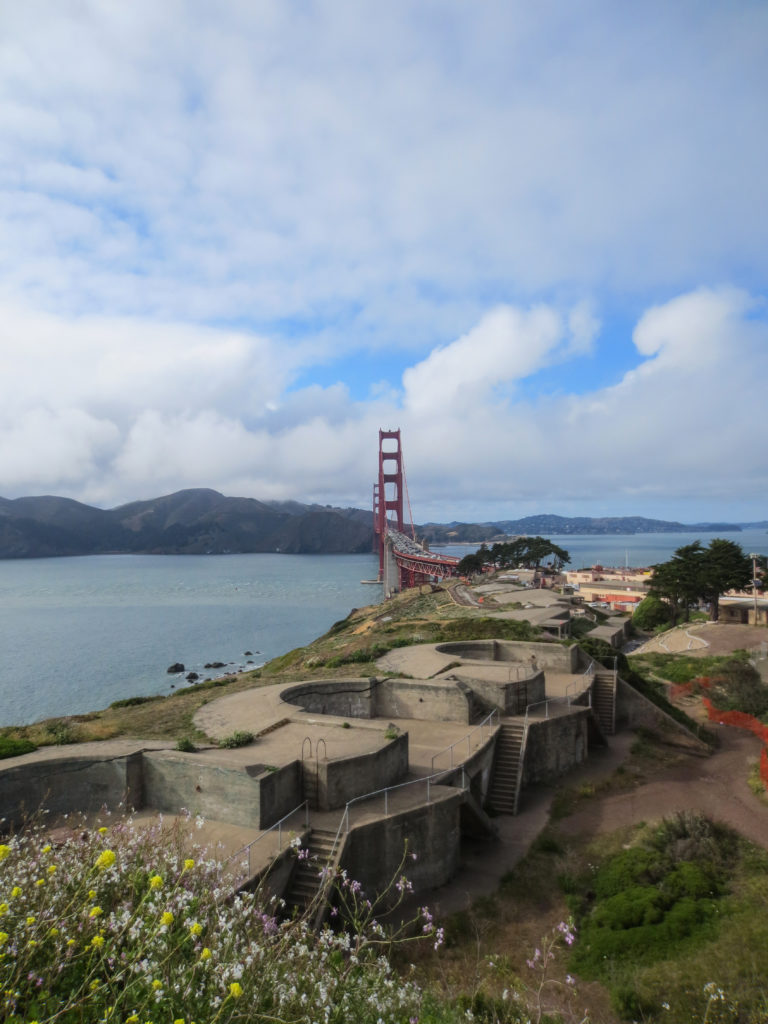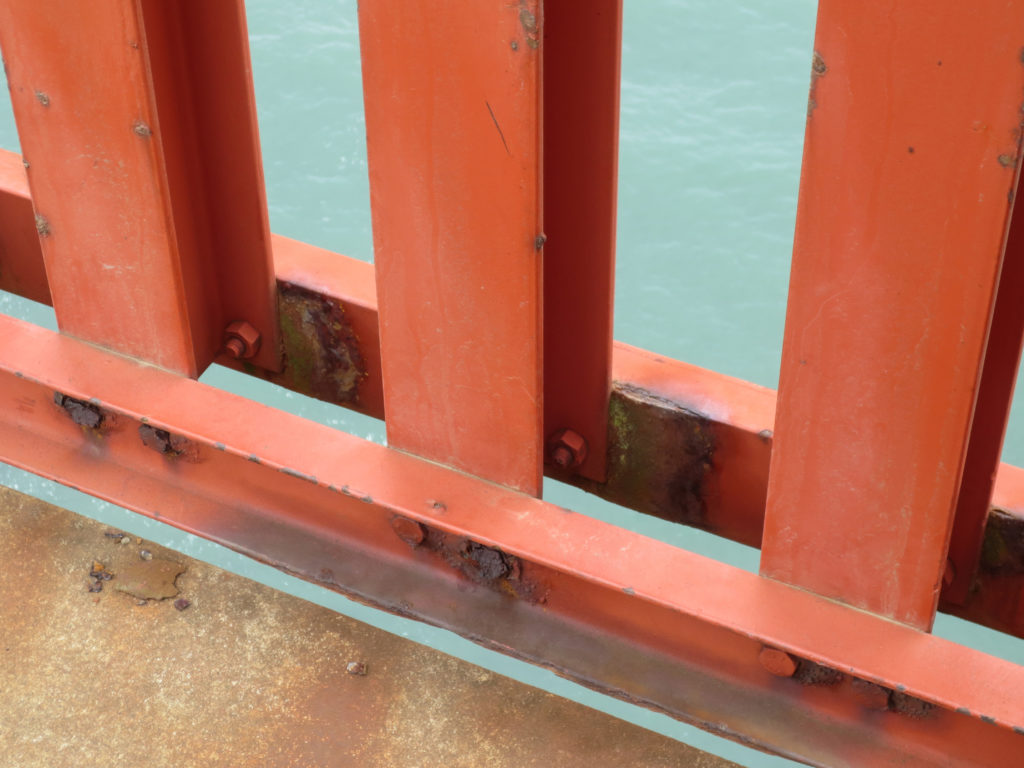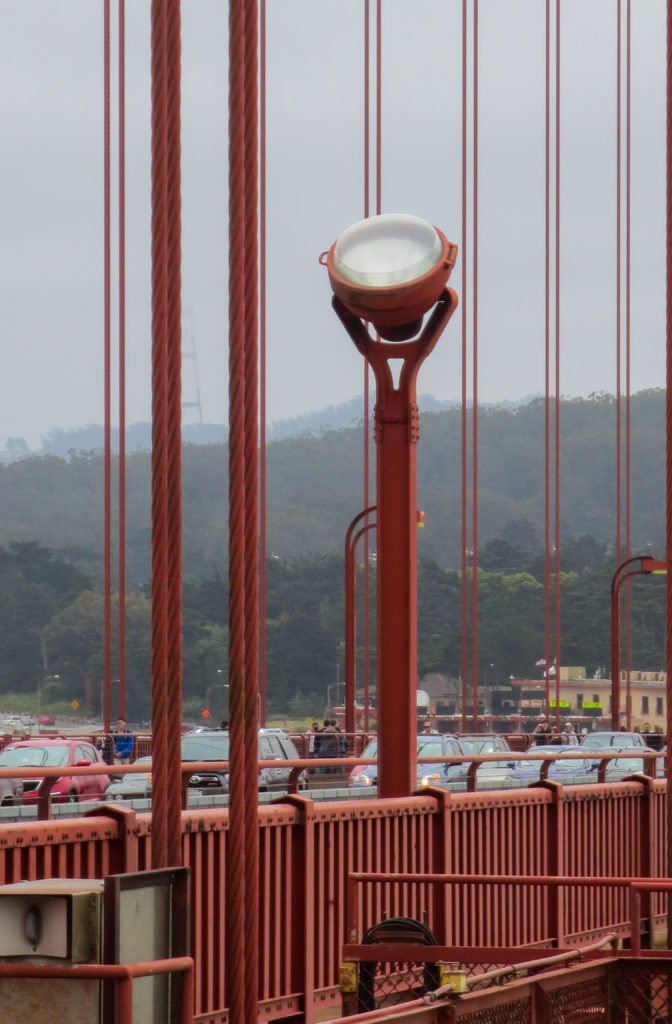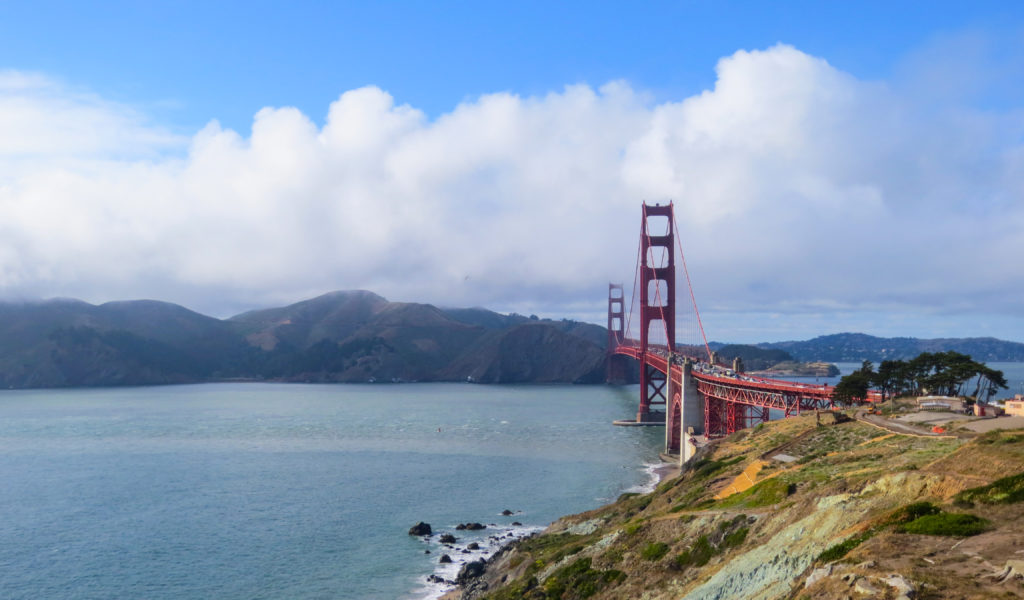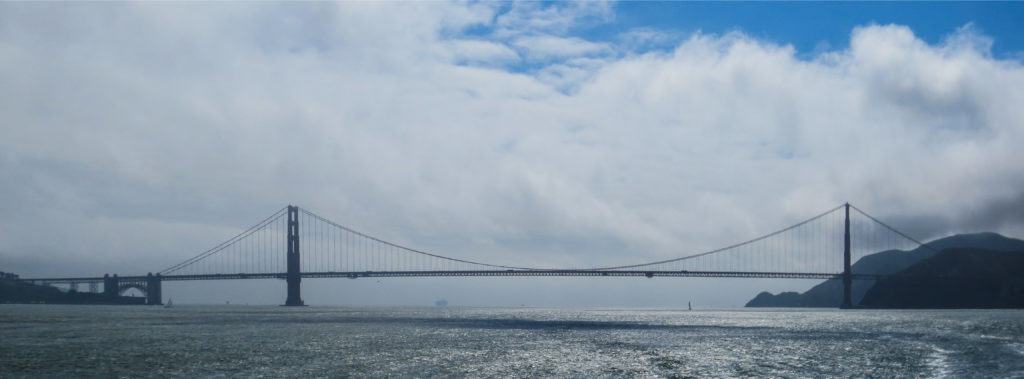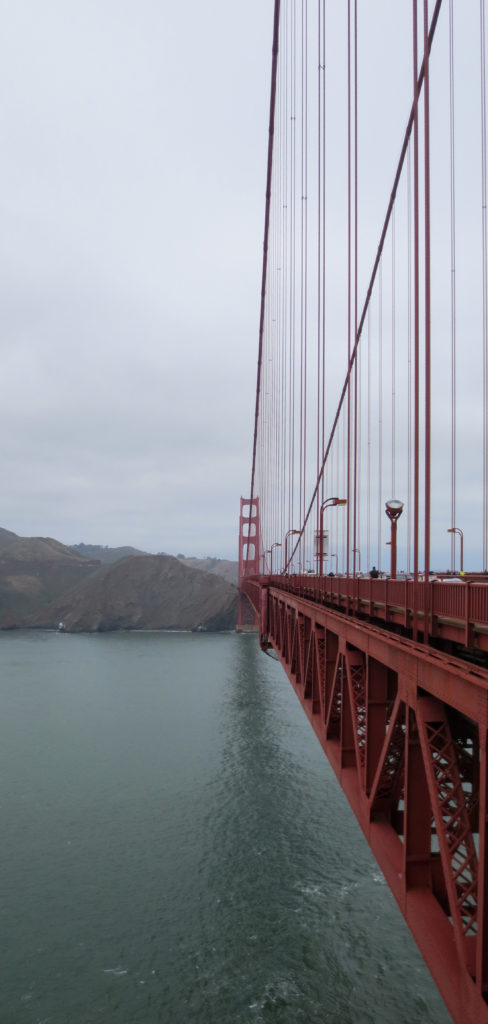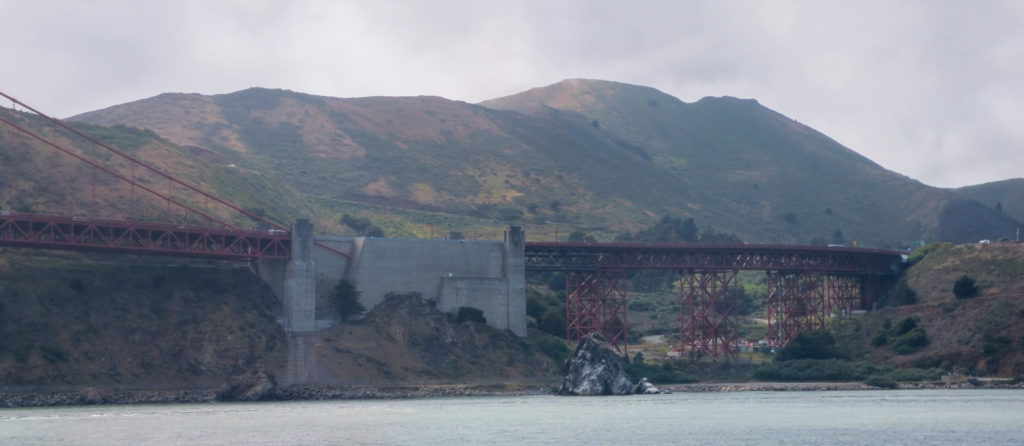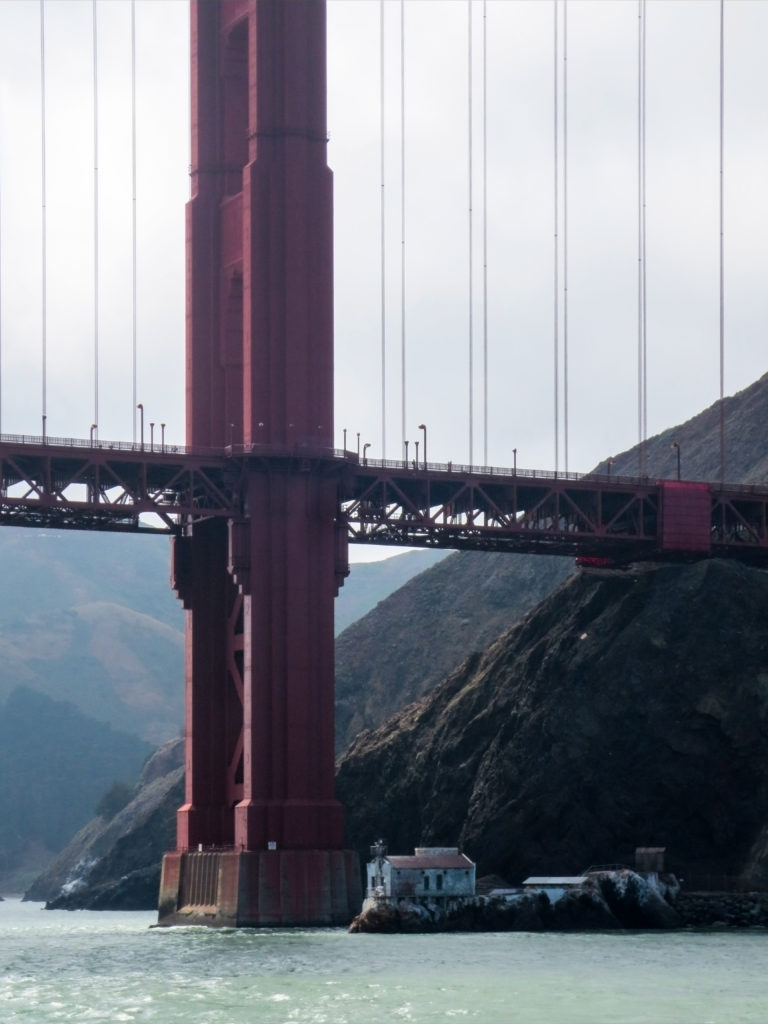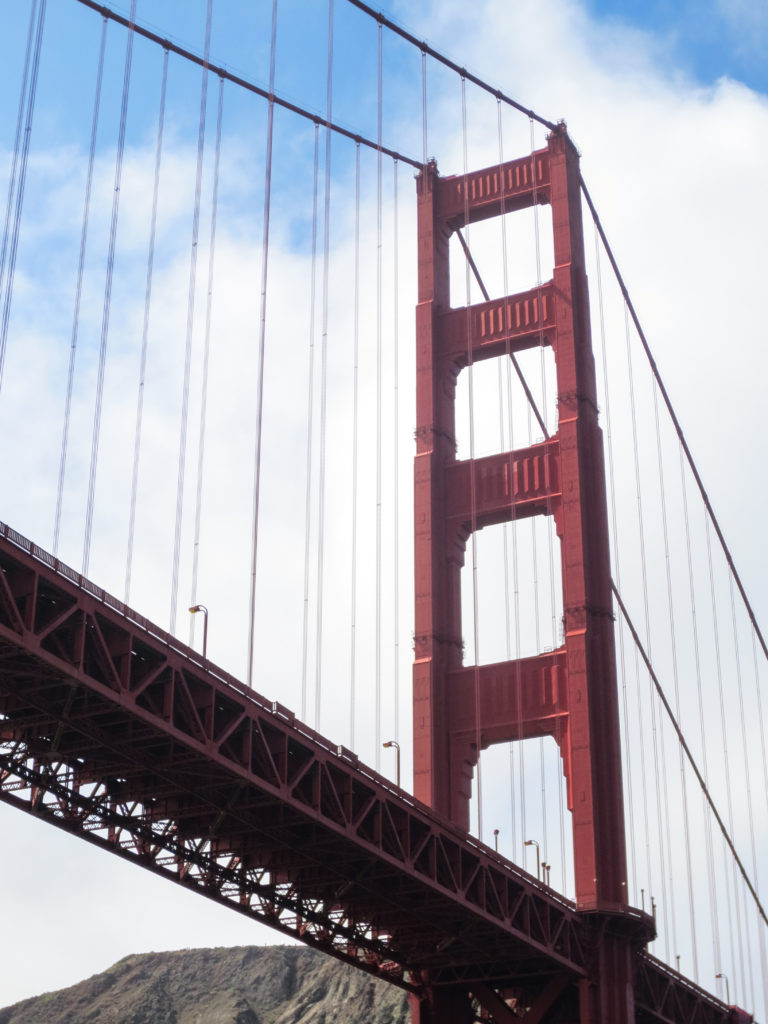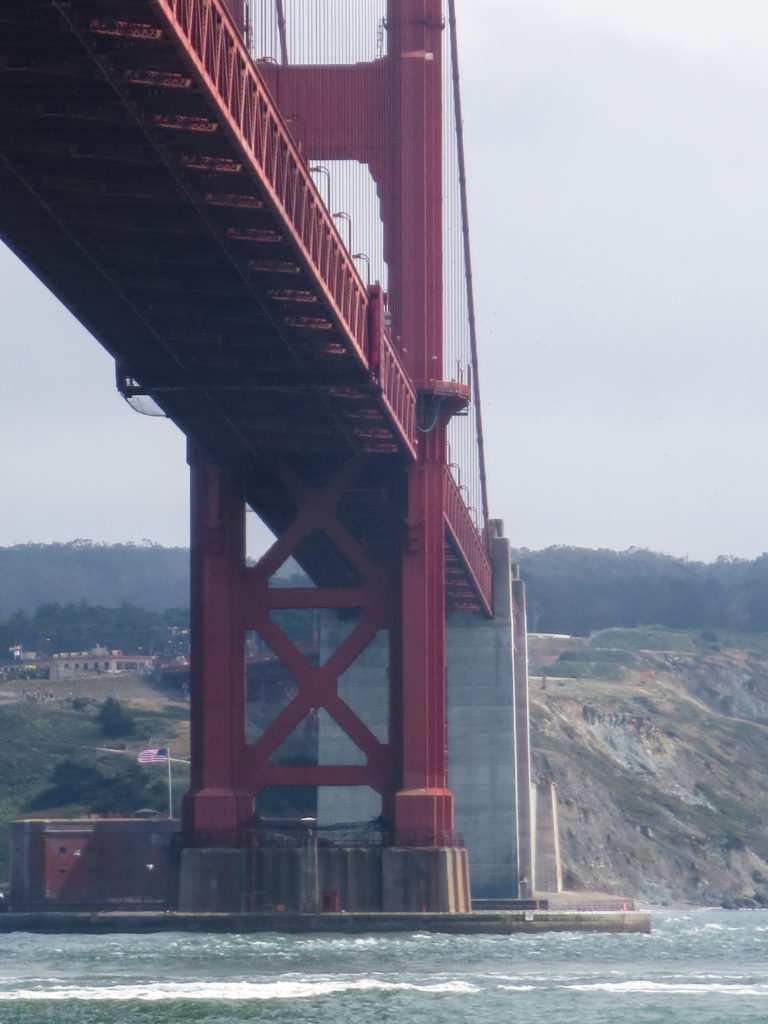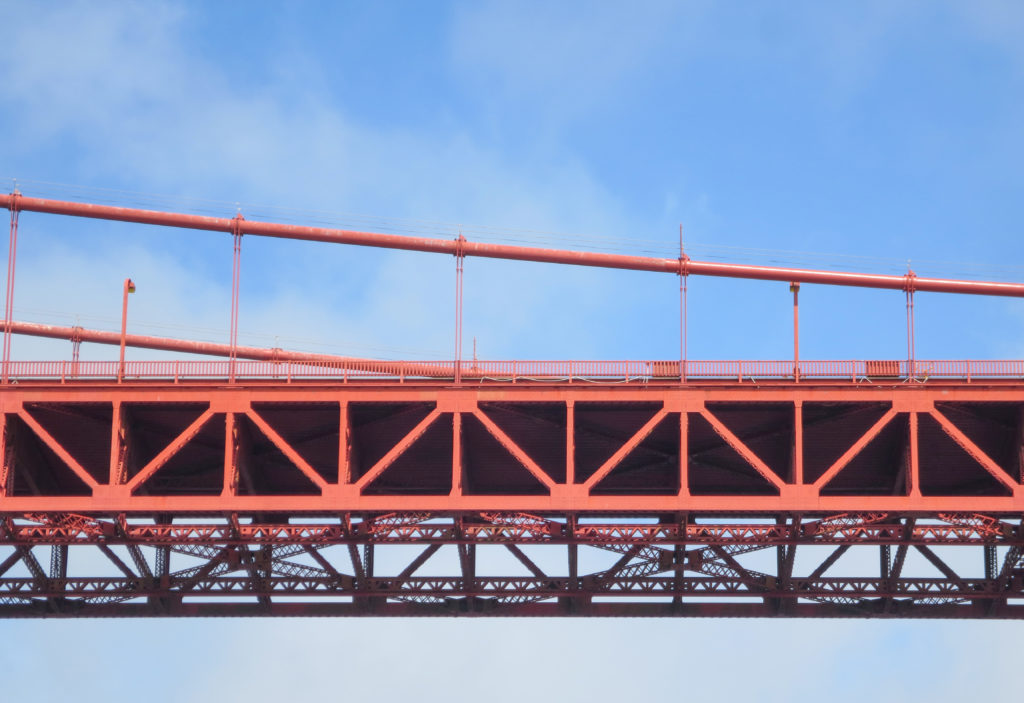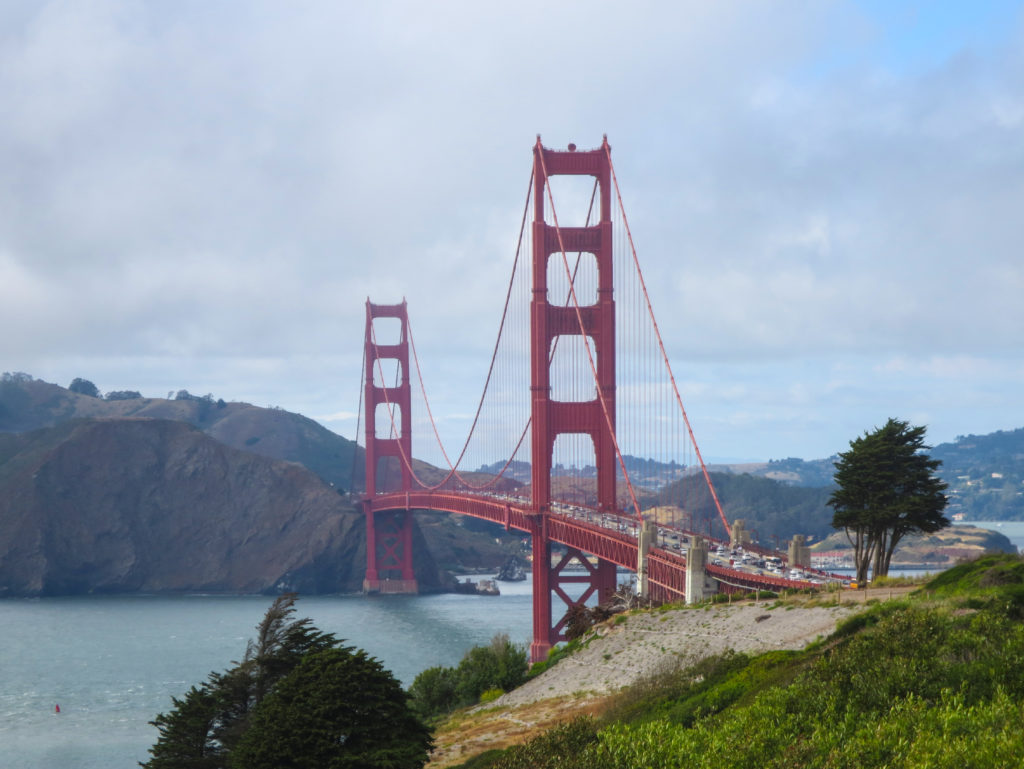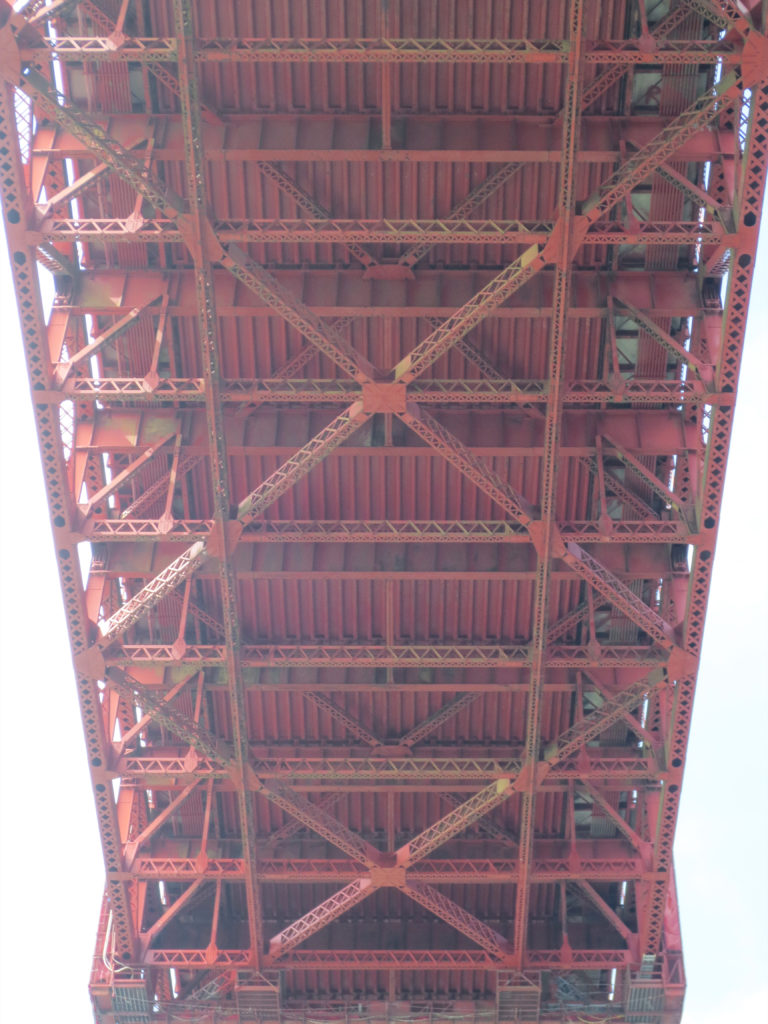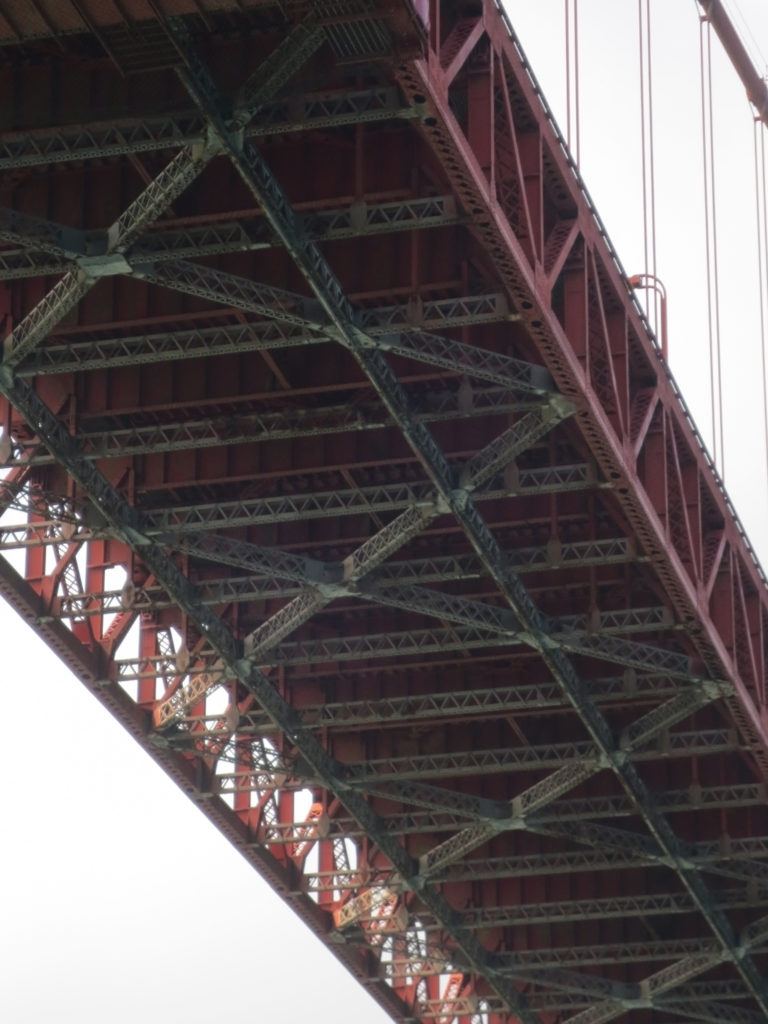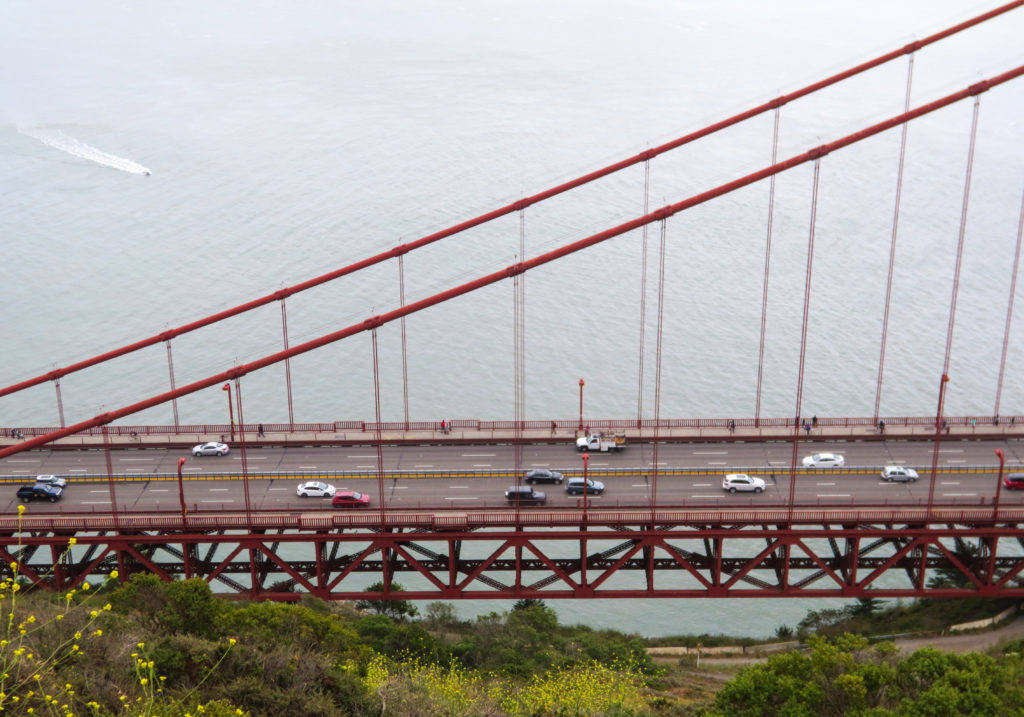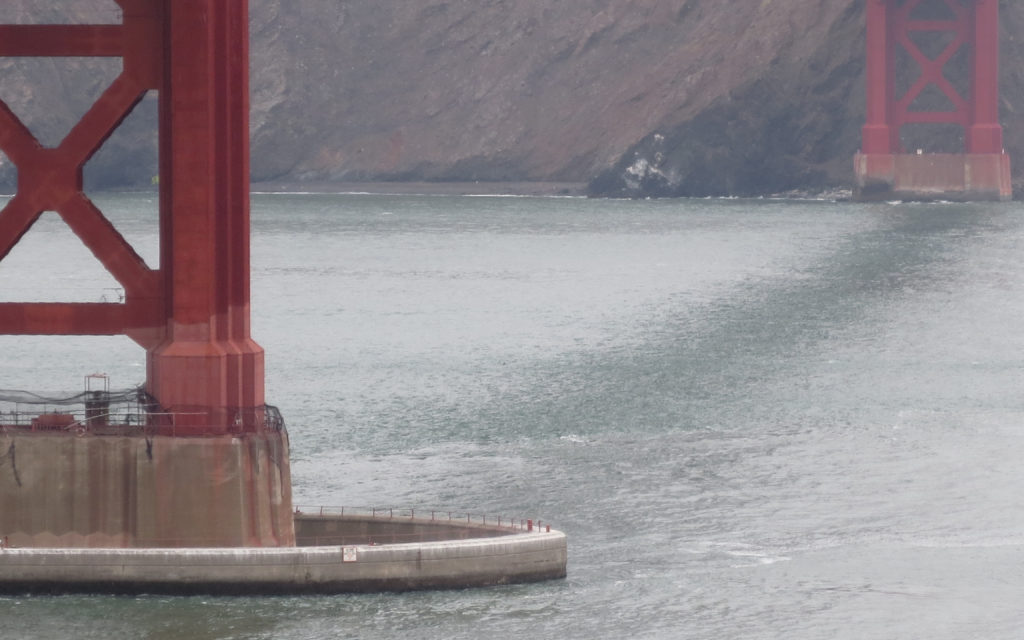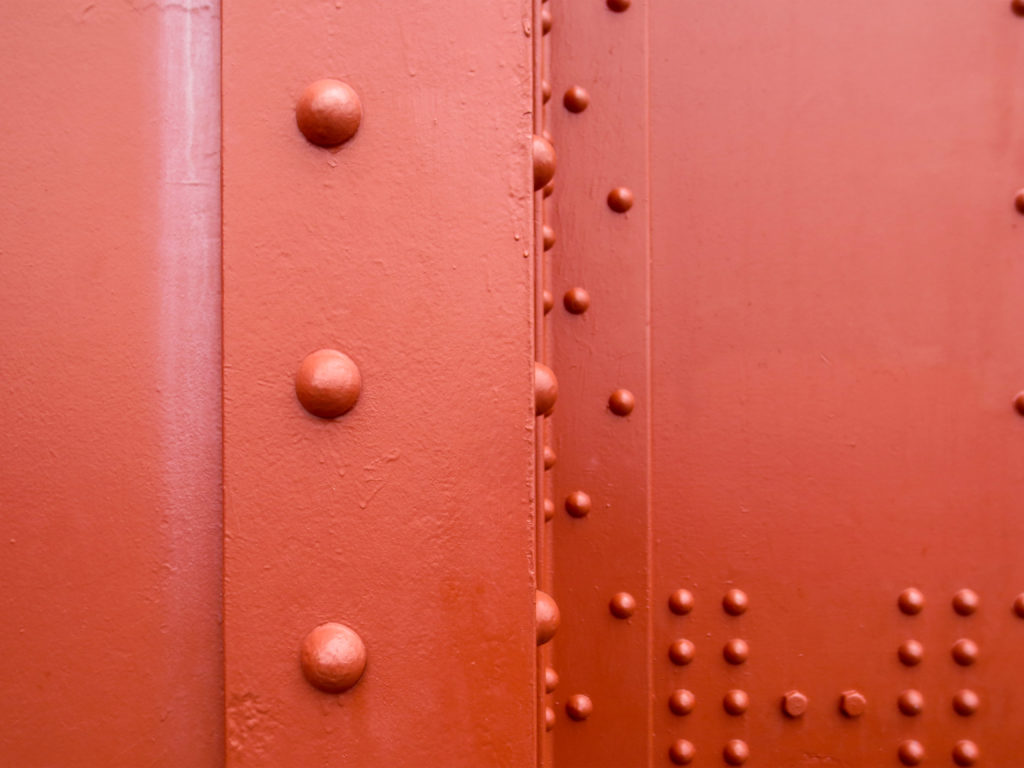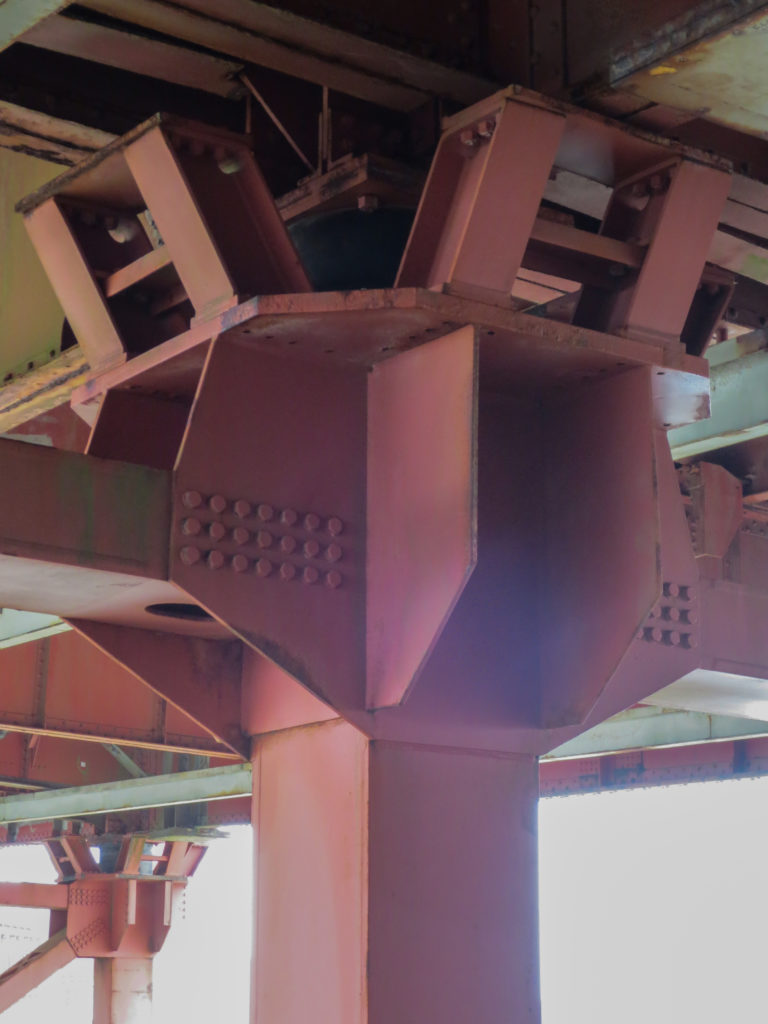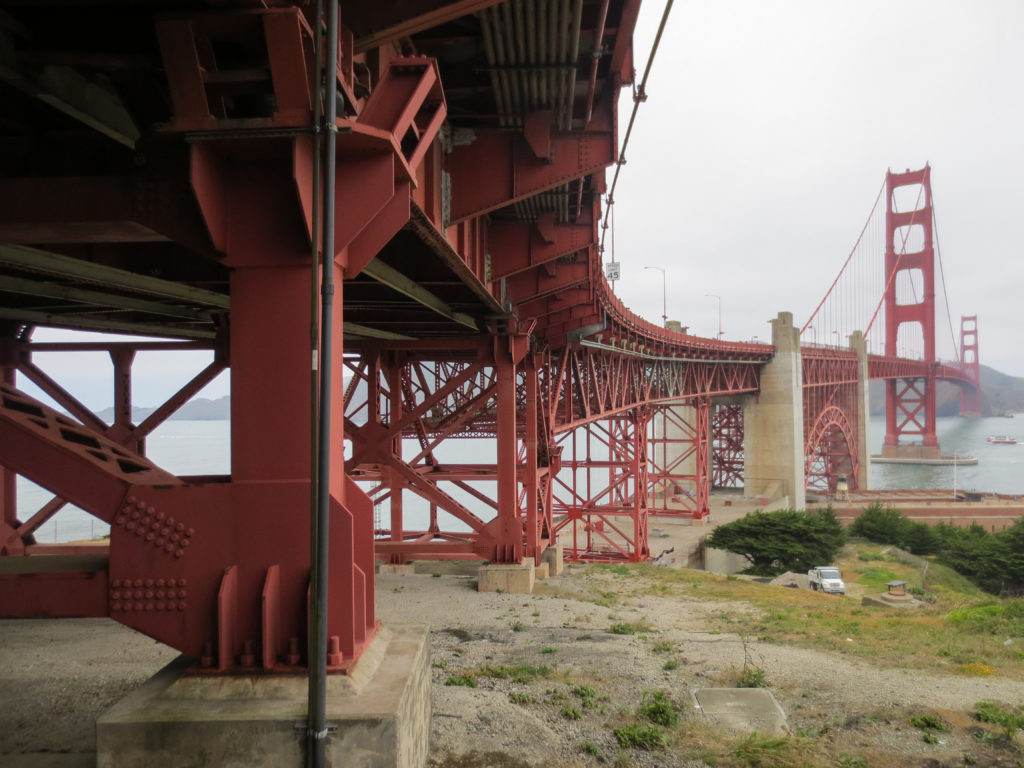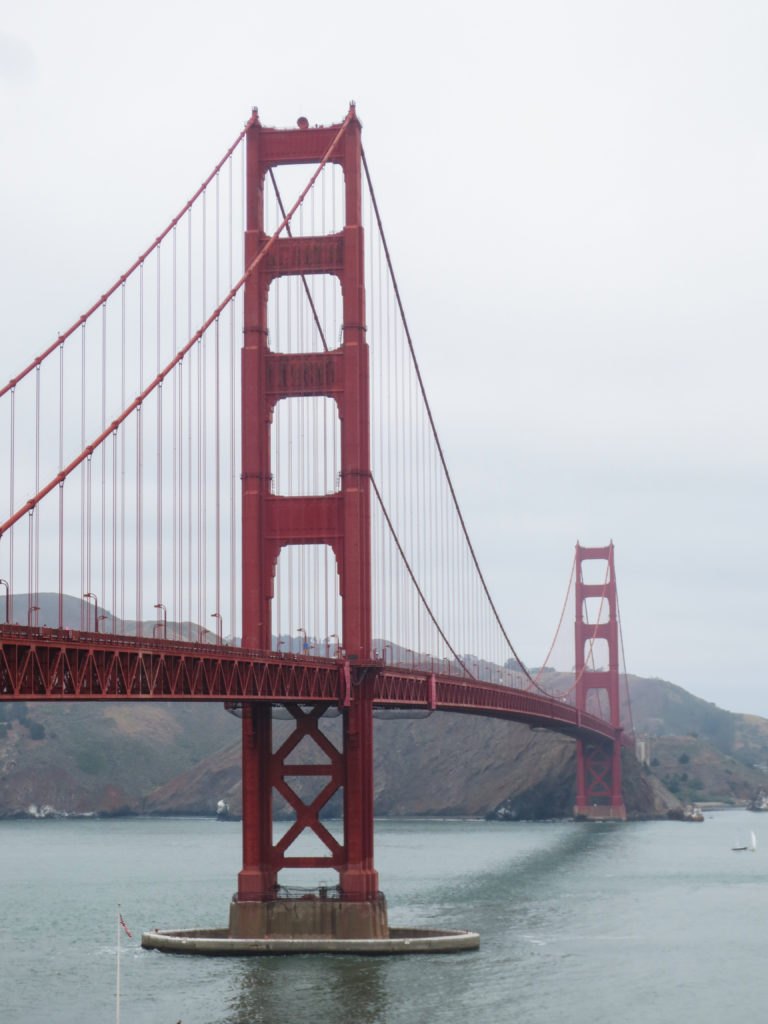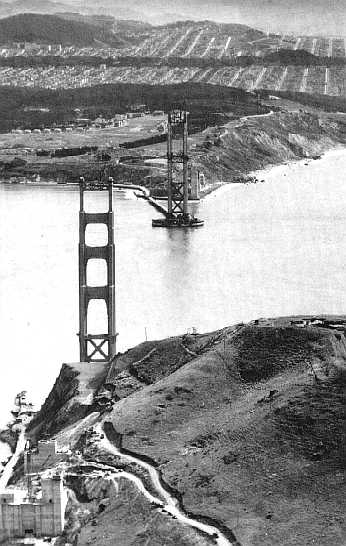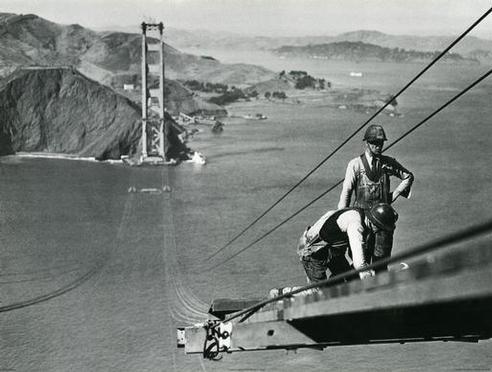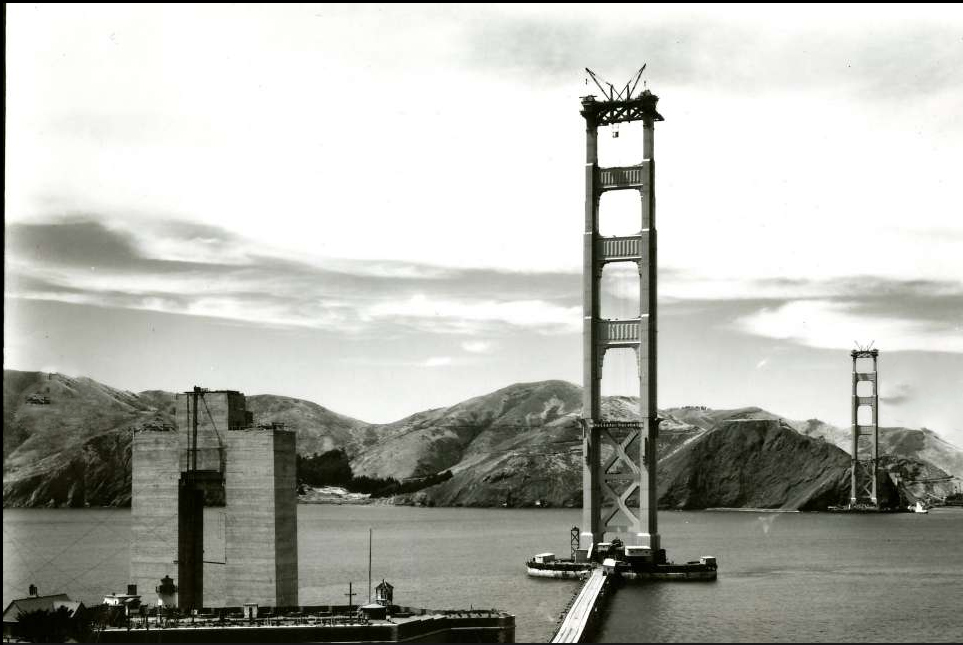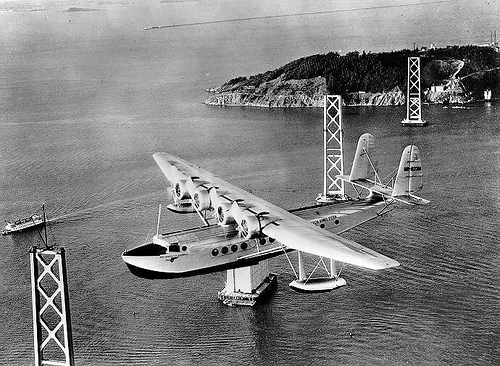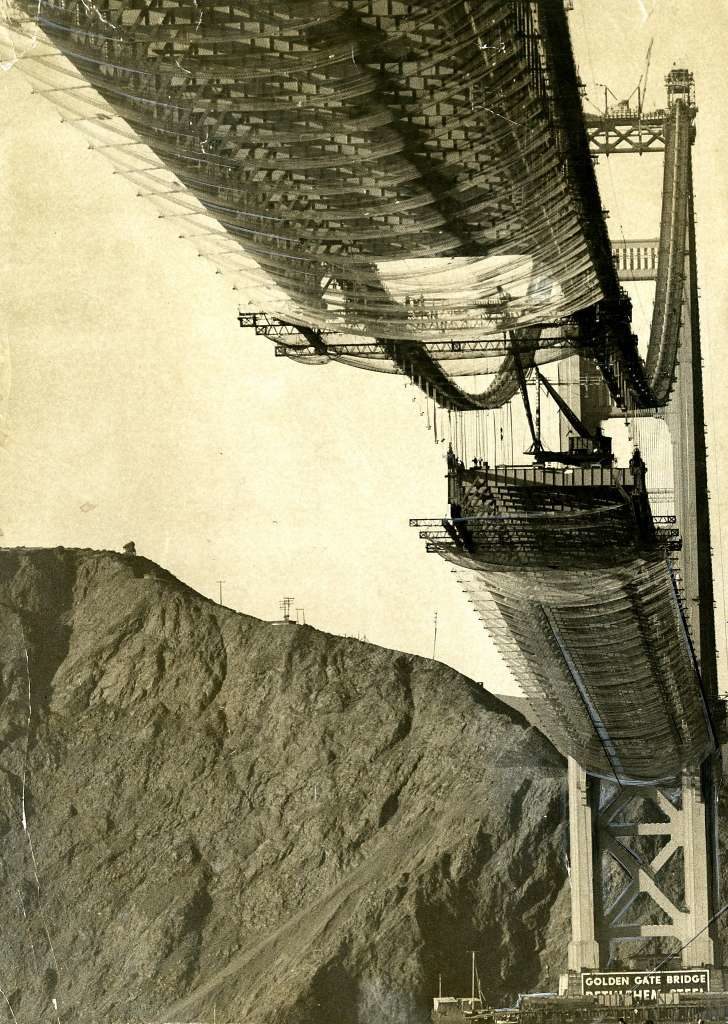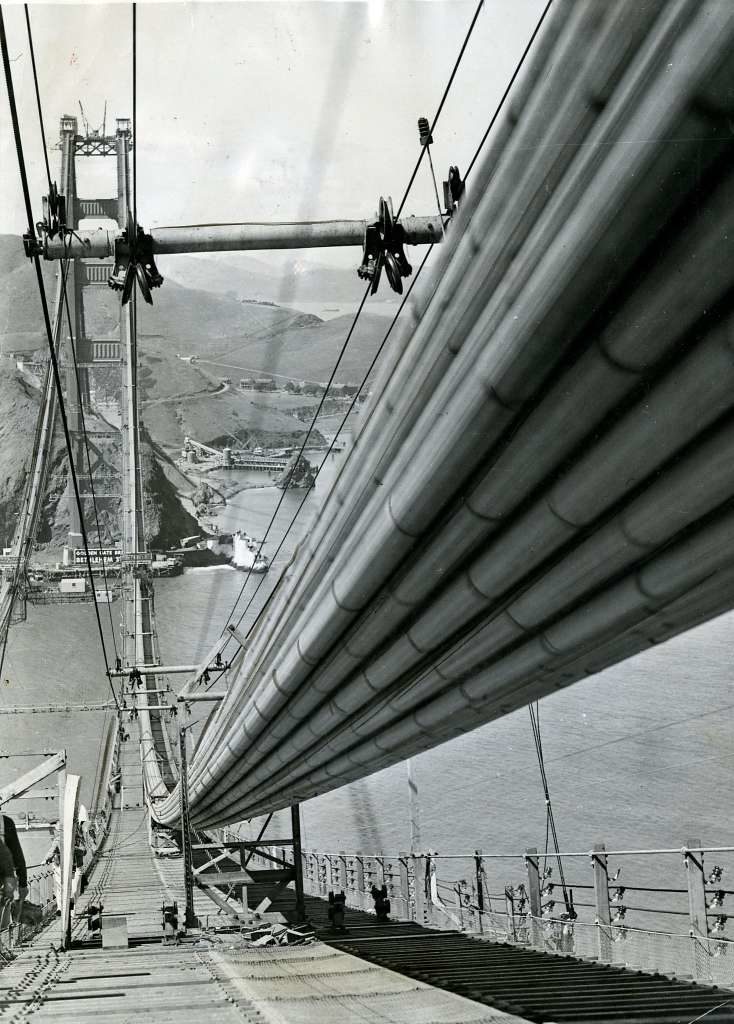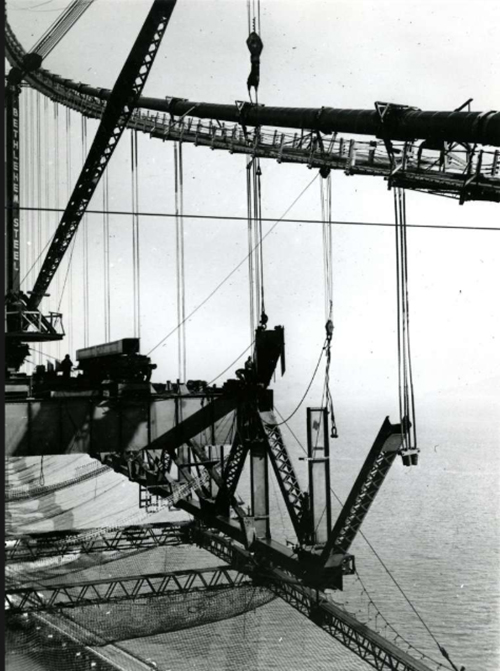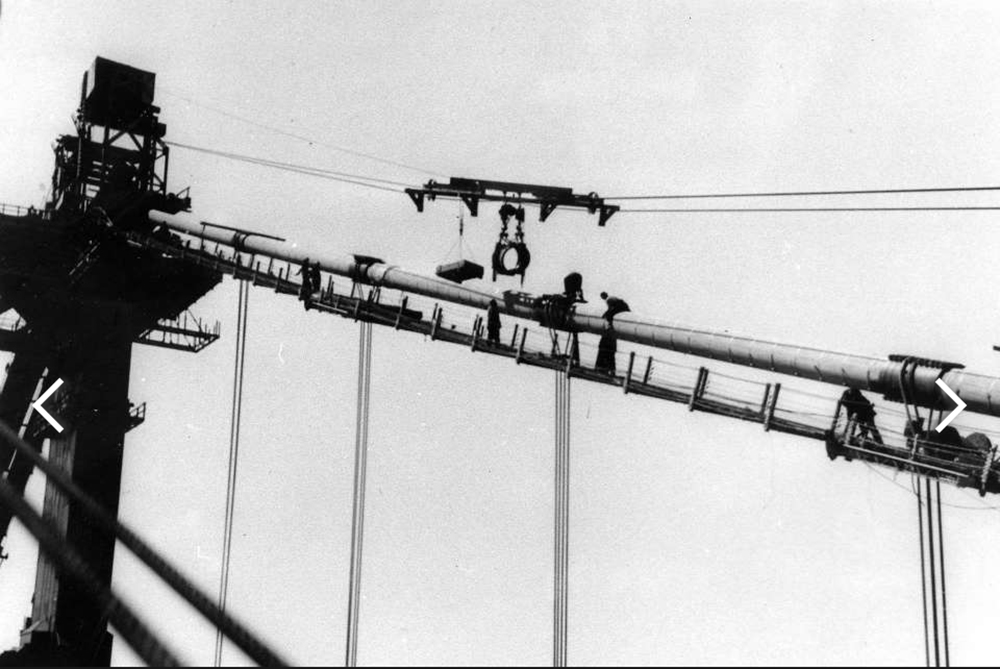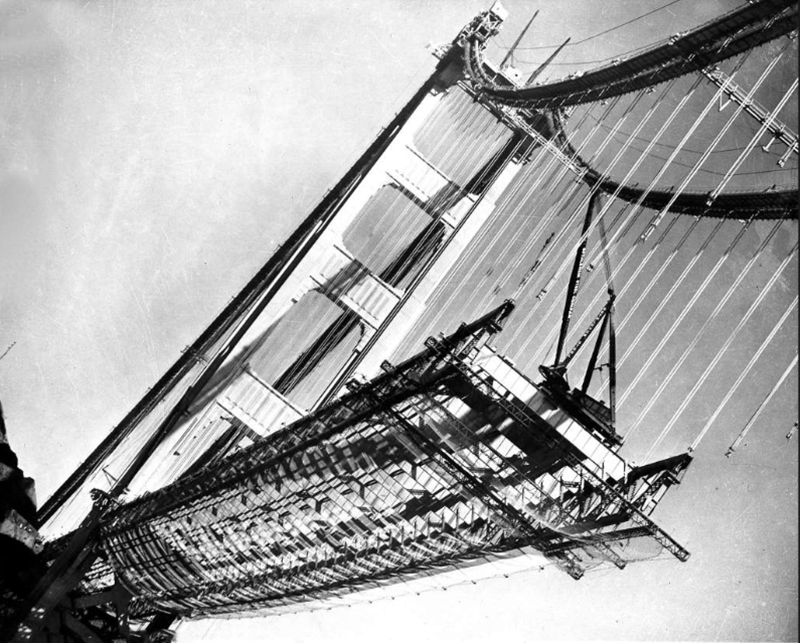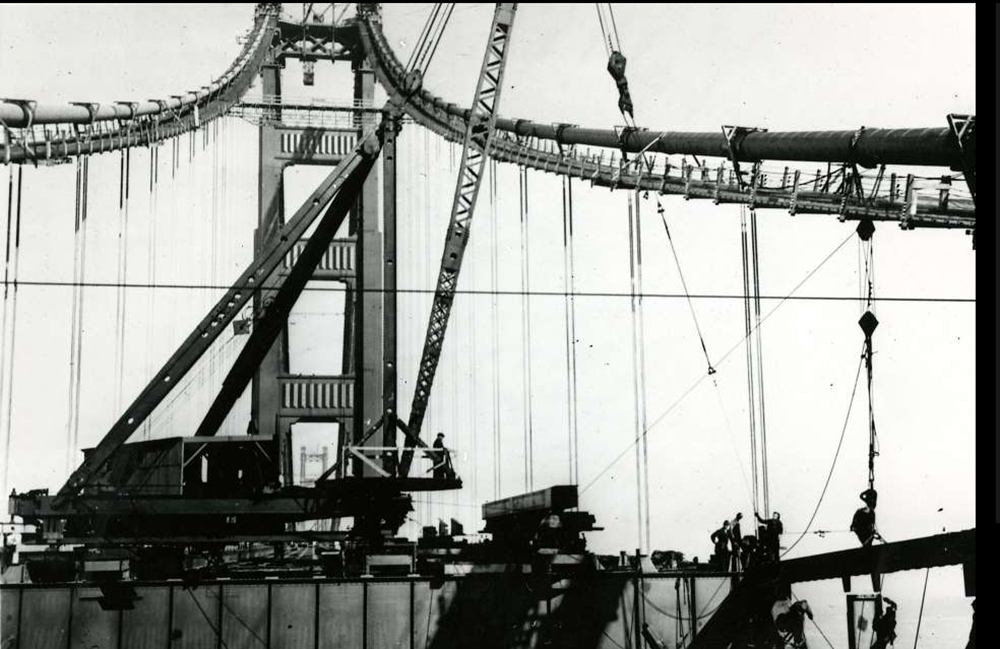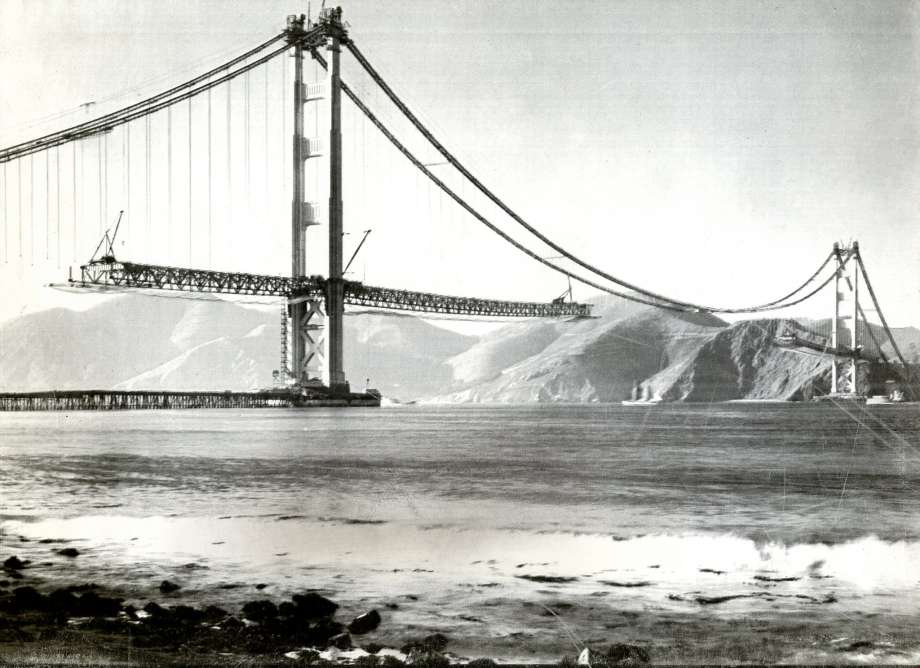Golden Gate Bridge

Introduction
The gateway to the San Francisco Bay was named Chrysopylae, or “Golden Gate”, by explorer John Charles Fremont Fremont in 1846 because I felt the Great Entrance would be advantageous for trade. Before the construction of the Golden Gate Bridge, people served by the ferries that travel between San Francisco and Marin to make the journey or to carry spring water from Sausalito to San Francisco.
In 1919 the visionary engineer Joseph B. Strauss came to San Francisco to inspect the site. He was convinced he could build a bridge across the Golden Gate, January 5, 1933 work began that lasted four years.
One of the most recognizable structures in the world, the Golden Gate Bridge was also at the time of its completion in 1937, the longest suspension bridge, and remained so for 27 years. Between its two tall towers of steel pass 1280 meters open water.
Become an instant hit, in 1971 the Golden Gate bridge covered his $ 75 million cost-only in the collection of a toll on the visitors on their way south of San Francisco. In the last seven decades, endured countless earthquakes, including the devastating 1989 of 7.1 on the Richter scale. In fact, the bridge has been closed only three times in its history due to high winds.
Joseph Strauss is credited as the visionary and engineer leading this project. However, the engineer Charles Ellis and Leon Moissieff designer played an important role in the success of this iconic intersection. Armed with only a slide rule and calculating machine, with its operations solved the problems of compression and tension faced by the project.
Technical

- Height: 75 meters above water
- Length: 2,737 m
- Weight: 80,470 tons
- Labor: Unknown, but 11 workers died during construction.
- Project Timeline: 4 years.
- Material: Steel
- Capacity: up to 2002, 1700 million vehicles crossed the bridge.
Location
The bridge was built in the North San Francisco Bay and connects the city with Marin County, California, USA.
Concept
In 1868 there was already a regular ferry service between San Francisco and Marin County, the latter speculators thought it revalue properties if available means of transportation more practical and efficient.
Structure
Suspended Bridge
The suspension bridges have two central pillars supporting the entire structure. From these pillars arise cables that support the weight of the roadway. Each pillar supports the weight of the section of bridge from the abutment to the end, and the section of bridge from the abutment to the middle of the bridge. The structure is balanced because the weight of each side of the stack is offset by the weight of the other side. Imagine two scales (of the two dishes) we put next to each other online. At both scales we put half a brick on the end plate, and a whole brick on the dishes that remain in the downtown, so that one half of the whole brick resting on the saucer of a balance, and the other half on the plate another.
Torres

The Golden Gate is suspended on two towers of 227 meters above the water level.
There rompenieblas lights atop the towers, as beacons to warn ships and aircraft of the existence of the bridge.
• Technical Data

- The Golden Gate Bridge has two great towers that support the two main cables.
- Height of tower above water: 227 m
- Tower height above road: 152 m
- Tower base dimension (each leg): 10 x 16 m
- Anchoring of each tower: 64000 t
- Load each of the main cables of the tower: 56000000 kg
- Brunt of the two towers: 40200000 kg
- Transverse deformation of the towers: 0.32 m
- Longitudinal bending towers, 0.56 m and 0.46 m
- The average water depth below the south tower: 34 meters
To build support pier of the south tower, the construction workers pumped 35.6 million gallons of water to raise the defense that was first built.
Street
It has six lanes for vehicular traffic, with an approximate width of 27 meters and a depth of 7.6 m.
• Deformation bridge, load capacity:
- The maximum deviation of the cross in the center includes: 8,4 m
- The maximum downward deflection in the center includes: 3.3 m
- Maximum upward deviation in the center includes: 1,77 m
Load capacity per linear foot: 1814.4 kg
Cables

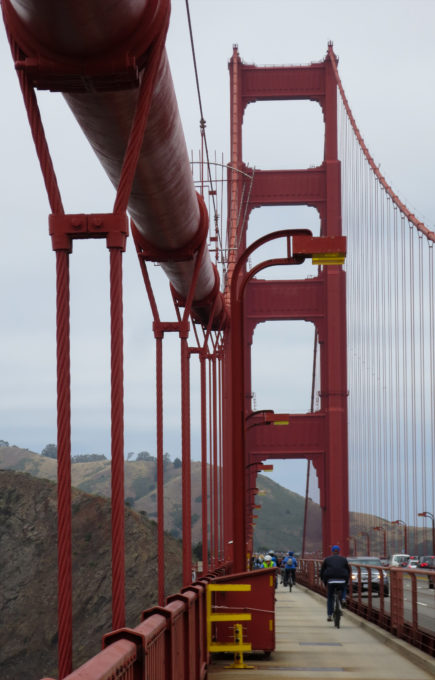
Hung between two elegant towers, the two main cables of the bridge weighing 11,000 tons each, and are formed by 25,000 individual wires, anchored to the external. In addition to sustaining the street suspended cables transmit compression to the towers and mooring of the bridge at each end of the building and have a length of 2332 meters
• Technical Data
- Diameter main cable including the outer carton: 0.92 m
- Length of main cable: 2,332 m
- Total length of galvanized steel wire used in the two main cables: 129,000 kilometers
- Number of galvanized steel wires in a main cable: 27572
- Number of packages or lines of galvanized steel wire on a main cable: 61
- Weight of main cables, suspension cables and accessories: 22200000 kg
The galvanized wire each of the main cables were placed through a shuttle-type loom, which moved backwards and forwards and was forming the body of the cable. The spinning of the main cables was completed in 6 months and 9 days.
Materials
Both beams are like steel cables and each tower has been used approximately 600,000 rivets
The anchorages are concrete towers.
Rehabilitation
Over the years, salt and moisture from fog and the ocean has caused the road deck began to show signs of deterioration. In response, the largest engineering project since the construction of the bridge was carried out with the replacement of the original deck with lightweight concrete, steel orthotropic stronger asphalt and covered with epoxy
The project, which took place between 1982 and 1986, dropped 12,300 tons of the total weight of the bridge. Has also expanded the width of the highway running through it, expanding it from 60 to 62 feet by reducing the width of sidewalks.
Video




